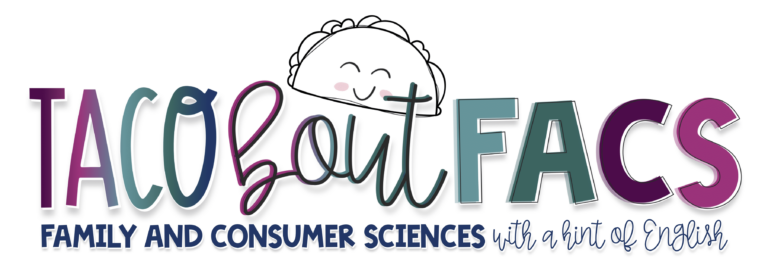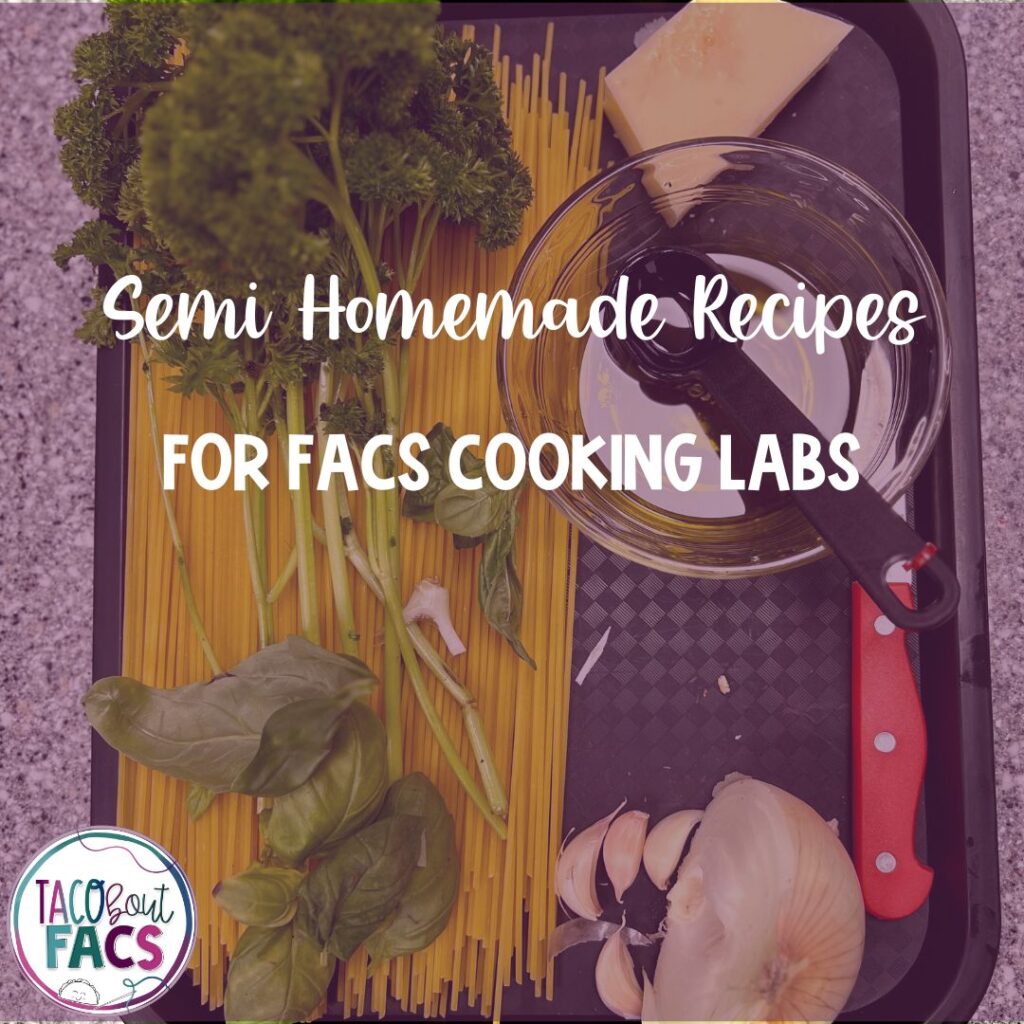Finding ways to create semi-homemade recipes in the Family and Consumer classroom can seem time consuming or costly, but the experience and the outcome proves its worth.
For many of our students, they haven’t taken the time to create something from scratch. Sometimes it’s the time, or the money, or lacking the resources. I would much rather it be one of those reasons than a lack of knowledge.
Empowering students with the knowledge for creating fresh, semi-homemade recipes builds confidence and encourages students to spend more time in the kitchen. It’s a win-win!
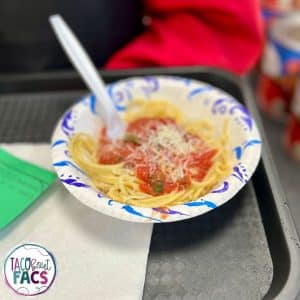
Cooking labs
Of course it’s easier and simple to use premade items, but why not take the time to step out of the “usual” way for cooking labs.
With the food lab motto, “Food should look good. Food should taste good. Food should make you feel good.” I try to push students out of their comfort zone in some sort of way for each lab.
Two labs my students make that includes making fresh and measuring is taco seasoning for walking tacos and fresh red sauce for pasta.
For example, with the pasta lab, I have students make fresh pasta sauce. The lab might be slightly more expensive, but incredibly worth it.
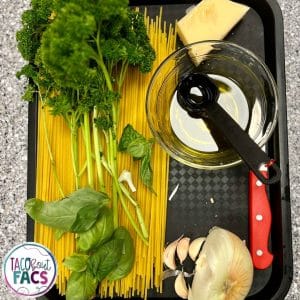
Very few students have ever mentioned making fresh sauce at home. There isn’t anything wrong with jar sauce, but making it fresh allows students to learn how fresh food tastes.
It also allows students to learn about building on flavors. Most could not believe how great it tasted.
I heard on more than one occasion in each hour that it was “the best sauce I’ve ever had” and that’s a priceless moment.
Students had a recipe in this resource, but were also encouraged to channel their inner Italian and really nailed it.
Life skills
Making fresh sauce or homemade taco seasoning allows students to practice measuring and that brought out great conversations about measurement conversions.
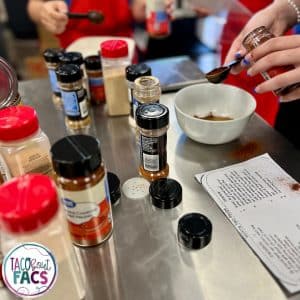
Some came to the prep table with a teaspoon measure instead of a tablespoon measure. Using the measurement conversions bulletin board made it easy to help students figure out what they needed.
It also helps reinforce the need for students to become informed consumers. We can tell them over and over through different lessons, but it hasn’t connected.
Making taco seasoning or fresh sauce allows them to see how they can control ingredient, freshness, and know exactly what is in their food. There isn’t a need for preservatives and hard to pronounce words because it is fresh.
Building confidence in the kitchen
Building confidence in the kitchen not only benefits our program because it keeps students enrolling. It also helps students at home and into adulthood.
When students feel confident they can easily make a healthier meal because it’s relatively inexpensive, tastes better, and makes them feel good, they are likely to recreate those meals at home. They are also likely to branch out to try other meals.
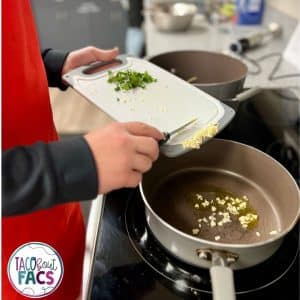
Somewhere along the way, over the last few decades, families have eaten fewer meals around the table. Convenience foods have become more normal than a fresh meal. Building confidence in the kitchen at a young age helps to start a movement to find the time to make a good meal because they enjoy cooking!
It also never gets old when students say they didn’t expect to like a lab, but then it becomes a new favorite.
End of labs feedback
I’ve said it before, but it really proves it’s a powerful tool in my classroom. Have you started implementing the end of labs feedback form in your classroom? It’s not always roses. Sometimes you aren’t pleased with a few answers, but there are always genuine responses that help me when planning future labs.
Download the free feedback form and I’d encourage you to give it a try!
